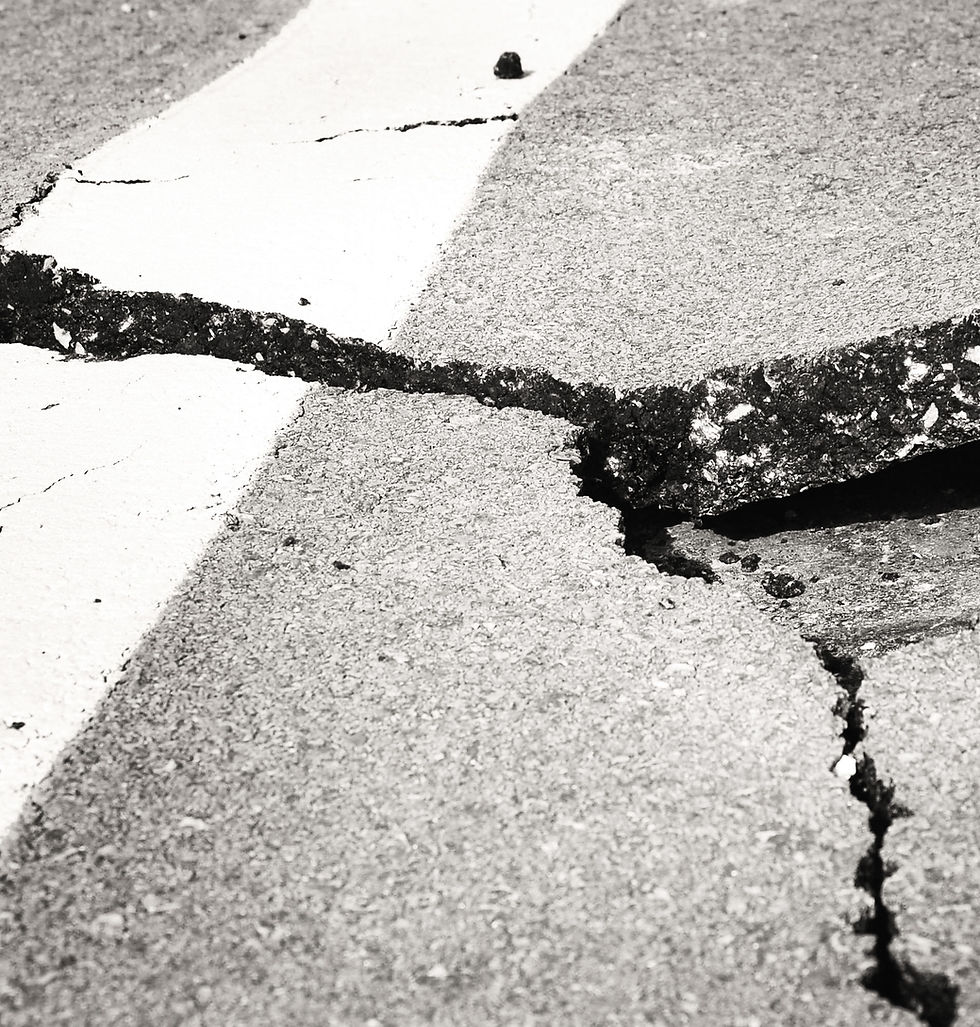Extreme Heat: Effects on Infrastructure
- Sylvia Rose

- Mar 22
- 5 min read
Extreme heat devastates health and infrastructure. Across the globe, regions already endure scorching temperatures. In extreme heat, roads buckle, bridges warp, medical equipment and electricity fail.

Extreme Heat
Extreme heat refers to prolonged high temperatures, causing heat sickness and fatalities. Regions undergoing heat-related crises include Iran, Kuwait, the United States, Nepal, South and SE Asia, the Pacific, Brazil and Iraq.
West and North Africa are scorched and parts of coastal Australia enter the death zone. India suffers a torrent of heat waves with temperatures in Delhi reaching 52°C (126°F) in 2024.
These regions all experience temperatures above 50°C in recent years. Wildfires, humidity and air pollution add to the heat. Extreme heat puts immense pressure on essential infrastructure.

Heat softens, dries out and weakens materials, with higher maintenance needs not always met, and a heightened risk of catastrophic failures. High heat plus humidity can promote mold growth up to 49°C, the dying point of most mold.
In the US, regions like Oregon, with recent temperatures of 47°C (116.6°F), and Washington are most at risk for mold damage. Australia's smothering humidity contributes to rising heat hazards, as do raging wildfires.
Extreme heat disrupts transportation, logistics and vital supply chains. Water and electric systems fail. Food, medicine and essential goods can't reach those who need them.

Urban areas are particularly vulnerable, forming heat islands where concrete and asphalt absorb and retain heat. Air pollution traps heat. Vehicles, people and activities in cities of billions make temperatures soar.
Technologies like smartphones and computers can perish in extreme heat. Overheating causes malfunctions, data loss and permanent damage. Computer systems, running business and city infrastructures, go down.
Air Conditioning
Air conditioning is a vital lifeline in extreme heat for those fortunate enough to enjoy it. Worldwide, fewer than one-third of households have air conditioning.

China is the world's leading air conditioning consumer. With a population of 1.4 billion, about 570 million units in are use. In the US, 90% of households use air conditioning, in a population of 340 million.
In India, 5% to 10% of households have air conditioners. The figure is anticipated to skyrocket, with a possible rise to 50% by 2037 and almost 100% by 2050. The run on air conditioning creates its immense problems.
Air conditioners consume massive amounts of electricity, putting pressure on power grids. In many regions, demand spikes during heatwaves, leading to blackouts and brownouts.

Power Grid
The stability of the power grid is uncertain in extreme heat. Power plants themselves are susceptible to breakdown. Water-cooled power plant operations can slow to a trickle if water is too warm or not enough.
Overloaded transmission lines can sag and short circuit, with widespread power outages. Renewable energy sources like solar power become less efficient in extreme heat, further straining the grid.
As urban populations grow, the strain on power systems intensifies. Extreme heat can also lead to lower efficiency in transmission lines, contributing to disruption and outages.

Water Systems
Access to clean reliable water also suffers in extreme heat. In heatwaves drought conditions worsen and water is in short supply. Prolonged heat in California has restrict water use in many areas.
Meanwhile, critical water shortages and toxic water quality affect the Middle East, Africa, parts of Asia. Especially hard hit are Chad, Democratic Republic of the Congo, Ethiopia, and Yemen.
Extreme heat and shortages lead to rationing or contamination. Rising temperature degrade water quality, increasing harmful algal blooms and making some water unsafe for consumption.

Transportation
High temperatures can warp roads, causing buckling and cracks and requiring frequent repairs. The US Federal Highway Administration reports 70% of roadways in the US are prone to heat-related damage.
Public transport systems, such as trains, overheat and cause backups or collapse during peak conditions. Air travel risks delays and cancellations due to temperature-induced restrictions on aircraft performance, affecting travelers and economies.
Vehicle emissions and burning energy contribute to intense heat especially in cities. Dhaka, Bangladesh is considered the world's most polluted city. Vehicle emissions create high levels of particulate matter (PM2.5) pollution.

Health Care Systems
Healthcare systems are crucial during heat emergencies. Hospitals deal with a surge in heat-related illnesses, such as heat strokes and dehydration.
Facilities in regions with chronic heat may struggle to meet rising demand, leading to overwhelmed emergency rooms and increased mortality rates. Intense heat can damage medical infrastructure.
Equipment malfunctions and medications degrade. These include insulin, some blood pressure drugs, and inhalers. Electricity falters and climate disruptions prevent effective patient care.

Electricity
Electronics work harder in high heat. As the temperature rises, the stream of electrons create electricity moves slower as electrons become sluggish. Electrical systems then have to work harder, compromising efficiency.
Transmission wire capacity declines. Lines need more force to supply power. Lights flicker and dim or go out completely, along with air conditioning, the fridges, fans and electronic connections.
Circuit breakers protect from electrical hazards and fire. High heat can trip circuits. Because the electrical panel exhausts more energy keeping all elements running, overvoltage hits the the power supply.

Electronic devices can overheat and cause a surge, potentially fire. Electronics like phones and laptops operate best below 29.5°C (85°F) but they're useless if the source of power is off when the battery runs out.
Extreme heat brings higher energy consumption, ie air conditioning, refrigeration or fans, combined with slow or stalled power delivery. This can come with an enormous financial burden.

READ: Lora Ley Adventures - Germanic Mythology Fiction Series
READ: Reiker For Hire - Victorian Detective Murder Mysteries


